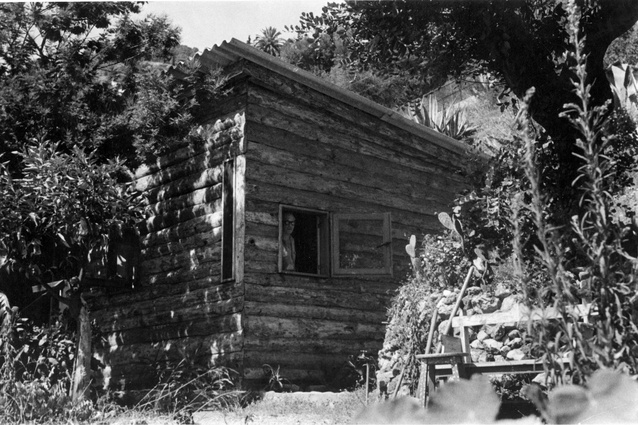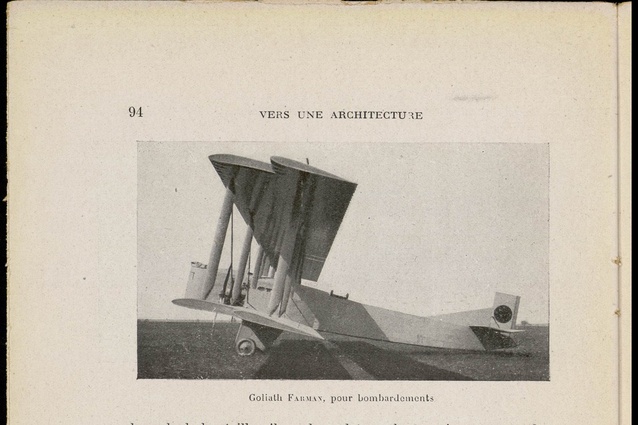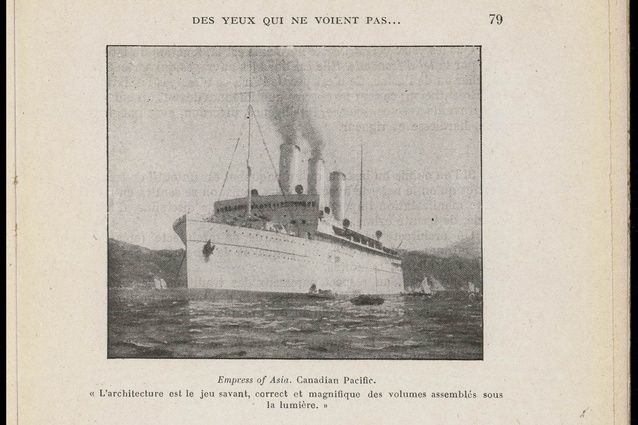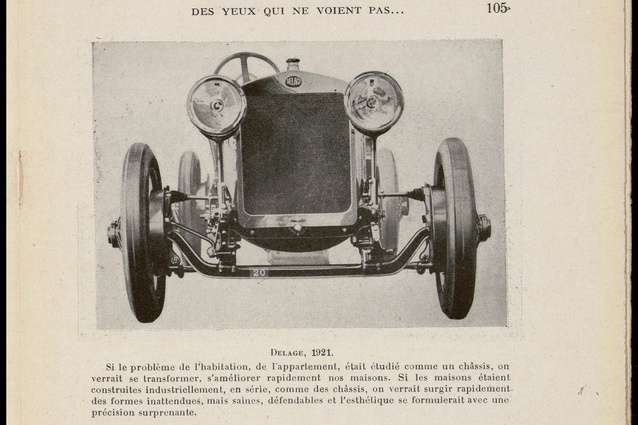Le Corbusier: Death and homelessness
On the anniversary of Le Corbusier’s death, architect Richard Francis-Jones muses on the French architect’s journey through life — on homelessness, loneliness, transience and confinement, on the machine versus nature — and on returning to the essentials.
On August 27, 1965, Le Corbusier died in Roquebrune-Cap-Martin. He had spent his holidays there since 1949, where he built a modest wooden cabin in 1952. Notwithstanding its modesty, he described it as “an extravagant place of comfort and kindness on a path that reaches almost to the sea. A tiny door, a tiny ladder and access to a cabin embedded below the vineyards.”
This simple cabin seems a world apart from the embrace of modernist ideology and unqualified belief in technology that characterised much of his polemic. Perhaps, close to the end of his life, there was a sense of retreat: a return to essentials, to humble and eternal form, materials and construction; a reach for the possibility of a return to earth, a way home. Perhaps he always knew that technology would never be entirely true, that it included an element of betrayal that would steal us from the earth and leave us forever homeless.
Homelessness
Today, more than at any other time, estrangement seems to be the primary condition of contemporary life. There appears to be little possibility for authentic dwelling, for a meaningful interconnection between contemporary forms of human settlement and the natural life of the world. It seems that our presence now only undermines and damages this fragile natural balance.
While the processes of modernisation have empowered a human command and domination of the natural world, it has left us alienated, displaced and lost. We have become globalised, disconnected, nomadic individuals, both compensated and debilitated by the infinite possibilities of a technologically-enabled, synthetic personal identity and the associated pressures of self-invention and unrealisable expectations.
Accepting the reality of our modern technology-enabled introversion, isolation and alienation, is there any escape from this sense of homelessness? If we are prepared to accept the necessary confrontation, is there any form of contemporary dwelling that is authentic?
Le Corbusier
Vers Une Architecture, published in 19231 is a collection of seven essays written by Le Corbusier (Charles-Édouard Jeanneret) largely from previously published work in the magazine L’Esprit Nouveau, which he owned together with Amédée Ozenfant. In this seminal, influential and polemical work of modernist architectural theory, Le Corbusier outlines the form and character of a pure, functionalist architecture true to the new age.
Le Corbusier knew he was working as an architect in an entirely new age, he knew everything had changed, that an architecture of the ‘earth’ was now irrelevant, impossible and meaningless. He had no time for masks of deceit, ‘foolery’ and nostalgia, that in their longing for a lost connection to the earth could only fabricate thin, ‘decorative’ and false representations. These ‘eyes which do not see’ were to be exposed and confronted with the reality and purity of a modern age that was to be embraced with an almost religious zeal.



Several of these essays are illustrated with photographs of the modern technology of transport; steamships, aeroplanes and automobiles. These images were to serve not only as aesthetic provocations but as true models of modern systematic design processes. If the ‘problem’ could be reduced to simple, functional and technical terms, then a pure and true design ‘solution’ would be assured, just as the technical and performance proposition of flight transport had enabled the evolution of the modern aeroplane.
The ‘problem of the house’, of human dwelling in the modern world, needed to be similarly stated. It was necessary to cast aside all pretense of earthly connection and confront the modern world, embrace the clarity and simplicity it offered, and learn from the modern machines of transport and the processes of design and production that lay behind the clarity and purity of their making.
Loneliness
Le Corbusier had great artistic insight and intuition. He knew the earth was lost to us and knew what we must do to be true to our modernity. He had no doubt, he was strong and unflinching. Perhaps he also knew that the confrontation he professed would be too much for us, knew we would lose our way, knew the pain of the loss of the closeness of the earth, the loneliness, would be too much for us. Perhaps, in his knowing, he left more guidance and comfort in his carefully selected examples of the simplistic evolutionary processes of design and production than first appears.
Transience
The ship’s cabin, the train carriage, the automobile seat and the aeroplane cabin are tight autonomous spaces of travel, designed to the finest detail of personal needs and individual support. In the automobile or perhaps most in the aeroplane seat, all our needs of life are compressed into a single personalised space. The ergonomic adjustable seat, headrest, storage compartments, mechanical or digital levers and switches to make slight adjustments in temperature, lighting or audio stimulation are perfect in form for our comfort and consolation.
We willingly give up our limited personal mobility for the vast distances and indiscrimination that these compressed spaces of mobility offer. But there is more to these spaces than mere vehicles of transportation to somewhere else, they are destinations in themselves.
In these capsules of comfort, we now generally face forward. Gone is the communality of facing our fellow travellers, our seats are firmly positioned to face in the unified direction of our travel, into the future or into a digital screen that compresses and encompasses the whole world for our tired eyes. Only a small ‘real’ window offers an outlook beyond the screen to an earth far, far below, incidental and almost superfluous. In these tightly designed spaces, all our immediate needs are precisely met, and there is a sense of relief in knowing we are travelling fast, far above the weight of the world. We can finally be free of all the longing and responsibility that the pull of the earth below holds.
Yes, we are confined, restricted, almost imprisoned but that too feels right, feels true and a relief from the endless expanse of possibilities that are open to us in the synthetic world of promise and expectation that is passing below. There is room in these little spaces for our minds to be free for a moment. There is peace here, there is even a sense of honesty, truth, a sense of authenticity; this is who we are. Finally, at least for the duration of our trip, we are, ironically, at home.
Interestingly, these spaces are rarely owned, they are shared. They are ours to use for only the duration of our journey. And this is part of their nature and meaning to us. They are tuned to the nature of our life, which is limited, they are ours to use only for a limited time. They are also generic, ideally suited and individualised but easily adapted to anyone else and openly declared as temporary. They will serve others in the future, this is part of their value to us, part of what makes them comfortable and comforting.
We do not belong, we can stay for a while and feel a form of solitary comfort, we are all passing through, don’t worry, it’s okay. In these spaces of transience, we can find a sense of authenticity. Rather than the mere psychological discomfort and strain of disconnection and alienation, nagging away at us, persistent and resilient within all the manufactured distractions of our lives, here, in our standardised compartment of transience, we truly are disconnected, suspended and separated. Our placelessness is real and authentic and brings with it the deep relief of authenticity. Finally, the peace of a sense of home returns to us; this is where we belong.

Cabin
The aeroplane cabin and the motor vehicle cabin – maybe these are the models we should turn to for an authentic architecture for our modern alienated condition. Maybe this is a way home for us. But this is a form of dwelling already all too familiar to us. Spaces for living compressed and standardised: tight, singular spaces for sleeping, working, eating and gazing deeply into a digital screen. The screen has become the natural focus for these units of accommodation, seating long since turned from a communal facing of fellow dwellers, to face, side-by-side, towards the singularity of the integrated digital screen. Spaces are reduced to a minimum through multi-use functionality and technological enablement that helps distract us from our loss. Units stacked up on top of each other into densely packed towers to rise high away from the earth.
With a sense of disappointment, we may need to accept that this is the true architecture of authentic contemporary dwelling, the true architecture of our time. This is home.
Alone
On August 27, 1965, Le Corbusier struggles against the pull of the water, trying hard to catch his breath and swallow no more water, he reaches out to get a hold of the nearby rocks. He waves away the offers of help from nearby bathers, just as he had cast aside the rational advice of his highly trained doctor when he decided to take this summer swim. His life was his, and responsibility like life is singular; we are alone.
Earlier that morning, Charles-Édouard Jeanneret opened the shutters a little more than usual so as to peer out between the trees to the inviting ripples on the surface of the Mediterranean below. He had been spending his summer vacation in Roquebrune-Cap-Martin as he had done every year since 1949. Here, he built one of the most extraordinary and also ordinary projects of his illustrious career — a simple pine bark cabin.
The building is a single room with a washbasin, bench bed and table within wood-boarded walls punctuated by small shuttered windows that give a glimpse of the bay. It is the most basic and essential of constructions. There are no signs of machine technology, purity and systematic design and production of modernity. It is a modest wood cabin, appearing almost like a vernacular hut that has provided only the most basic essentials of shelter for generations. It was all he needed, to be held tight in the warmth of a simple wooden cabin. Despite all his efforts, he could not maintain his hold on the rocks and slipped inevitably back into the water. His body was washed up on the beach some time later, and ultimately returned to the earth.
“We are all youthful barbarians, and only our new toys bring us excitement. That has been the sole purpose of our flights. This one flies higher, that one faster. But, now, we will make ourselves at home. We will forget the machine, the tool. It is no longer complex; it does what it is supposed to do, unnoticed. And through this tool we will find again the old nature, the nature of the gardener, the navigator, the poet.” (Antoine de Saint-Exupéry).2
1 Le Corbusier, Vers Une Architecture; translated into English as Toward an Architecture by John Goodman, but commonly known as Towards a New Architecture after the 1927 translation by Frederick Etchells, First Published; Editions G. Crès et Cie., Paris, 1923.
2 Antoine de Saint-Exupéry, Terre des hommes (Wind, sand and stars); translated by Lewis Galantière and published in English, Reynal and Hitchcock, United States, 1939.














